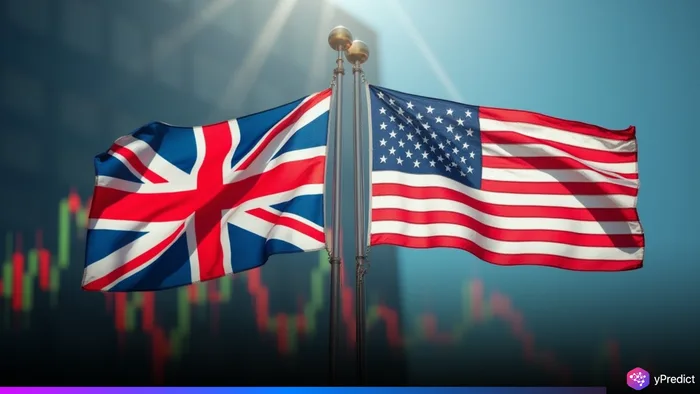
The British Pound (GBP) fell sharply against the US Dollar (USD) on Friday, with the GBP/USD pair correcting to 1.3530 amid growing global uncertainty driven by the escalating conflict in the Middle East and signs of a weaker UK economy.
The decline comes after the pair briefly touched a three-year high near 1.3630 earlier this week. However, rising geopolitical risks and anticipation of steady monetary policy decisions from both the Federal Reserve and the Bank of England (BoE) triggered a broad risk-off mood, favoring the USD.
Geopolitical Crisis Sparks Flight to Safety
After Israel’s “Operation Rising Lion,” where Israel had targeted military/nuclear objectives in Tehran, the market sentiment collapsed. PM Benjamin Netanyahu said the operation was necessary to eliminate the threat of Iran building nuclear warheads.
US President Donald Trump supported Israel’s movement, which further ignited anxieties of a broader conflict in the Middle East. The White House clarified there was no involvement from Washington, and the market reacted sharply. Traders were looking to the USA and the Yen as safe-haven products.
Fed and BoE in Focus
The attention will now shift to the future policy decisions of the Federal Reserve (June 18) and the Bank of England (June 19). The consensus is to expect no change in interest rates for either of the central banks, but forward guidance will be important.
The Fed is likely to hold steady at a 4.25%-4.50% range, and according to CME FedWatch, the market pricing is about 55 basis points of rate cuts by the end of the year, and perhaps as early as September.
Similarly, the BoE is expected to keep its OCR at 4.25%, and investors will want some guidance if the BoE is still on a “gradual and careful” easing of policy with new economic headwinds.
UK Economic Data
The UK’s recent macroeconomic data has been disappointing, with unemployment rising to 4.6% in the three months to April, its highest rate since July 2021, while GDP for April came in down 0.3%, larger than anticipated.
Factory output is also flagging, while considering the increased National Insurance costs, it would be fair to say the climate for new hires is only deteriorating. This string of economic events could compel the Bank of England to walk back its outlook or tone with respect to rate cuts in the future.
In the lead-up to its policy meeting, traders looking for direction on CPI, in what is in danger of slipping into the Bermuda triangle of inflation, interest rates, and UK monetary policy, are watching it closely with CPI for May due Wednesday.
GBP/USD Loses Bullish Momentum
While a pullback in the pair is a bit more recent, the nearest-term trend for the pair is mildly bullish, led by the 20-day EMA near 1.3490. Yet, the recent lack of bullish momentum is also supported by the 14-day RSI dropping below 60.
Immediate support will be seen near 1.3434, the high from September 2022, and the first key resistance remains close to 1.3750, which is the level from January 2022. A pullback below 1.3430 can resume a deeper monetary correction, whereas a bounce above 1.3600 may restore bullish sentiment.







